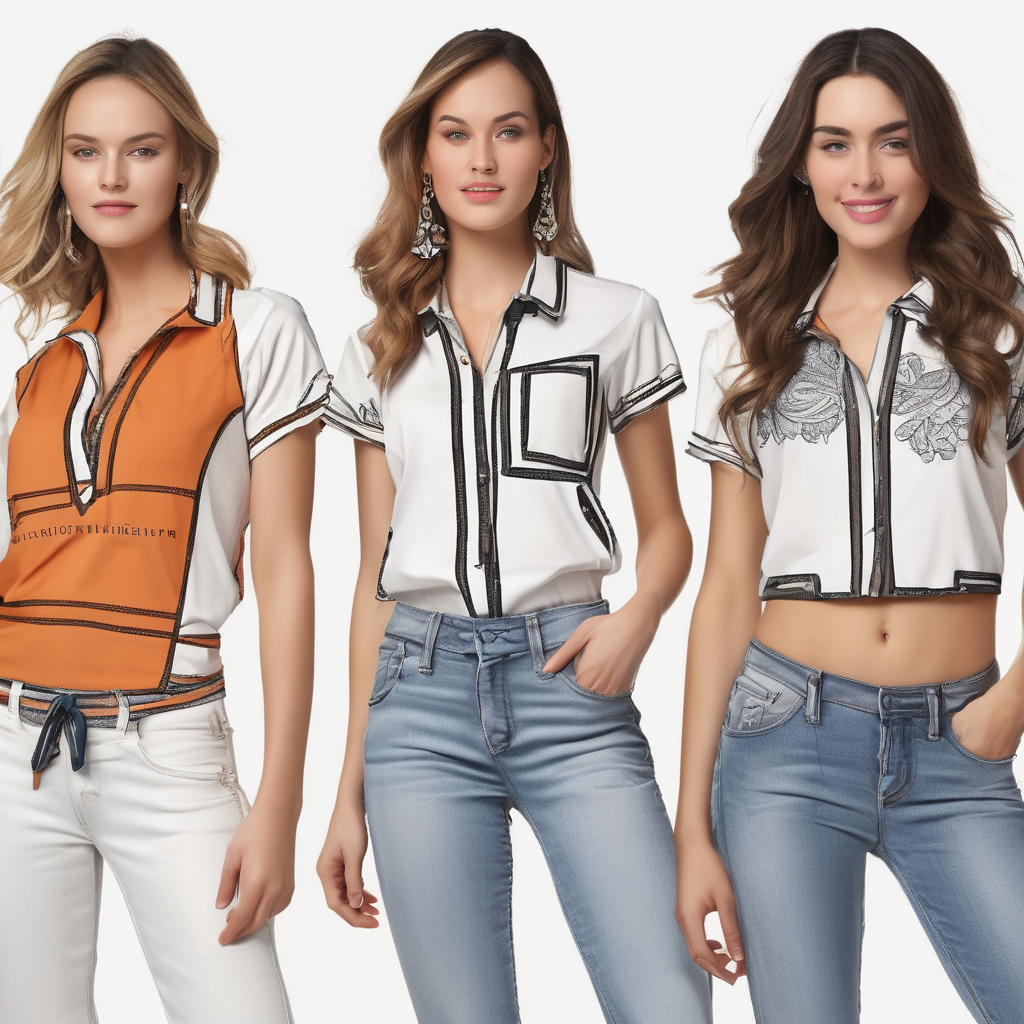Selecting the right fabric for a tailored suit can transform your appearance and confidence. Understanding your body type is essential to enhance your strengths while minimizing any concerns. With an array of materials available, knowing how to choose the perfect fabric not only impacts fit but also influences comfort and style. Explore how different fabrics can complement your shape, ensuring you make informed decisions that elevate your wardrobe. Discover your ideal match for a suit that truly reflects you.
Understanding Body Types
Navigating the world of tailored suits requires a keen understanding of different body types and how they influence clothing choices. Each body type has unique characteristics that can greatly influence the fit and appearance of a suit. For instance, an athletic build often features broad shoulders and a narrow waist, while a pear-shaped body may have wider hips compared to the shoulders.
Also read : Crafting Your Unique Yoga Journey: Customized Routines for Ultimate Stress Relief
Choosing the right fabric is crucial for enhancing one’s appearance. For instance, lightweight materials like linen or cotton are excellent for a more relaxed fit, ideal for a slimmer build. Conversely, heavier fabrics such as wool or tweed provide structure, making them suitable for more robust body types. The weight and weave of the fabric can significantly affect how it drapes over the body, impacting the overall silhouette.
Fabric draping plays a pivotal role in how a suit looks on different body types. A well-draped fabric can accentuate positive features and downplay less desired ones. For example, a fabric that drapes well can create a more streamlined look, which is particularly beneficial for those with a rectangular body shape. Understanding these nuances ensures that a tailored suit not only fits well but also complements the wearer’s natural physique.
In parallel : DIY Face Mask Recipe for Oily Skin: Transform Kitchen Staples into Skin-Saving Solutions!
Fabric Types and Their Properties
In the realm of tailored suits, understanding different fabric types and their properties is essential. Each fabric offers distinct characteristics that influence not only the suit’s appearance but also its comfort and practicality.
Wool is a popular choice for suits due to its versatility and natural wrinkle resistance. It is ideal for cooler climates, providing warmth and a classic drape. Wool suits are known for their durability, making them a long-lasting investment. However, they require careful maintenance, including dry cleaning and proper storage, to retain their quality.
Cotton suits offer a more casual look and are perfect for warmer weather. The breathable nature of cotton makes it comfortable for summer wear, but it is prone to wrinkling and may require frequent ironing. Despite this, cotton is relatively easy to maintain and can be machine washed, depending on the blend.
Linen is celebrated for its lightweight and breathable qualities, making it a favourite for hot climates. However, linen wrinkles easily, which adds to its relaxed charm but may not suit formal occasions. Linen suits require gentle handling and are best dry-cleaned to maintain their integrity.
Each suit material offers unique benefits, making the choice of fabric a crucial consideration for both style and practicality.
Choosing the Right Fabric for Each Body Type
Selecting the appropriate fabric is crucial in crafting a suit that complements your body shape. Each body type benefits from specific fabric selection to enhance its natural features and provide a balanced appearance.
Fabrics for Athletic Body Types
For those with an athletic build, featuring broad shoulders and a narrow waist, heavier fabrics like wool or tweed are ideal. These materials offer structure and help maintain a clean, sharp silhouette. Fabrics with a slight stretch can also enhance comfort without compromising style, allowing for ease of movement.
Best Fabric Choices for Curvy Body Types
Curvy body types benefit from fabrics that offer a balance between structure and flexibility. Cotton blends or jersey fabrics are excellent choices as they drape well, accentuating curves while providing comfort. These materials also offer breathability, making them suitable for various climates.
Fabrics that Flatter Slender Body Types
For those with a slender build, lightweight fabrics such as linen or cotton can create a relaxed yet stylish look. These materials add volume and texture, which can enhance the overall silhouette. Additionally, choosing fabrics with patterns or textures can add depth and interest to the suit, making it visually appealing.
Color and Pattern Considerations
Understanding color theory and pattern matching is vital when selecting a tailored suit that enhances your body’s natural features. The right choice of color can significantly affect the perception of body shape, making it an essential aspect of suit aesthetics.
Impact of Color on Body Shape
Colors can visually alter the perception of size and shape. Darker hues, such as navy or charcoal, tend to create a slimming effect, making them ideal for those looking to minimize certain features. Conversely, lighter colors like beige or pastel shades can add volume, which might be beneficial for slender body types seeking a fuller appearance.
Choosing Patterns
Selecting suitable patterns is equally crucial. Vertical stripes can elongate the body, making them a great choice for shorter frames. On the other hand, larger patterns or checks might suit taller individuals, adding balance to their silhouette. It’s essential to consider how patterns interact with body features to achieve the desired look.
Seasonal Color Trends
Seasonal trends also play a role in suit aesthetics. For instance, earthy tones are popular in autumn, while brighter colors emerge in spring. Staying updated with these trends can help in making an informed choice that complements both your body type and the current fashion landscape.
Style Tips for Tailoring
Understanding the nuances of tailoring tips is essential for achieving the perfect suit fitting. A well-fitted suit not only enhances your appearance but also boosts confidence. Proper fitting ensures that the suit complements your body shape, providing a sleek and polished look.
Importance of Proper Fitting
The key to a successful tailored suit lies in its fit. A suit should contour to your body without being too tight or too loose. Pay attention to crucial areas such as the shoulders, chest, and waist. The shoulders should align perfectly without any overhang, while the jacket should button comfortably without strain. Trousers should break slightly over the shoes, maintaining a clean line.
Coordinating Fabric with Suit Design
When selecting fabrics, consider how they work with the suit’s design. For instance, a classic wool suit pairs well with a structured design, while a linen suit suits a more relaxed cut. Choose fabrics that complement the suit’s style, ensuring a cohesive and harmonious look.
Accessories That Complement Fabric Choices
Accessories play a vital role in enhancing your suit. Opt for ties and pocket squares that coordinate with your fabric choice. For example, a silk tie can add a touch of elegance to a wool suit, while a linen pocket square complements a summer suit. Consider the overall aesthetic to ensure your accessories enhance, rather than overpower, your ensemble.
Visual Examples of Fabric in Use
Understanding the impact of different fabric choices on tailored suits can be greatly enhanced through visual examples. By examining case studies, one can appreciate how various fabrics alter the overall appearance of a suit.
Case Studies of Tailored Suits
Consider a wool suit: its structure and weight lend a formal, polished look, ideal for business settings. In contrast, a linen suit offers a more relaxed, breathable appearance, perfect for summer events. These examples highlight how fabric selection directly influences the suit’s aesthetic and functional qualities.
Visual Comparisons
Visual guides can effectively demonstrate these differences. For instance, side-by-side comparisons of suits made from cotton versus tweed can reveal how texture and weight affect draping and silhouette. Such comparisons help in understanding which fabrics best suit particular body types and occasions.
Identifying Fabric Quality
When evaluating fabric quality, visual cues are invaluable. Look for a consistent weave and finish, which indicate durability and craftsmanship. High-quality fabrics often have a subtle sheen and feel smooth to the touch. Recognising these signs ensures that your tailored suit not only looks good but also stands the test of time.
Where to Buy Tailored Suits
Navigating the world of suit shopping requires knowing where to find the best tailored suits. Understanding the differences between online and in-store shopping can significantly influence your purchase decision.
Reputable Retailers for Tailored Suits
When considering where to buy tailored suits, several reputable retailers come to mind. High-end department stores often provide a range of options, from off-the-rack to bespoke services. Boutique tailors offer a more personalised experience, focusing on custom tailoring to meet individual needs.
Online vs. In-Store Shopping
The choice between online and in-store shopping for tailored suits depends on personal preferences and convenience. Online shopping offers the benefit of a vast selection and ease of browsing from home. However, in-store shopping provides the advantage of trying on suits for the perfect fit and receiving expert advice from sales associates.
Custom Tailoring Options
Custom tailoring provides numerous benefits, including a suit that fits perfectly and reflects personal style. This option allows for adjustments in fabric, colour, and design, ensuring a unique garment tailored to your specifications. While custom tailoring may be more time-consuming and costly, the result is often a suit that enhances your appearance and confidence.
Common Fabric-Related Questions
Understanding the nuances of fabric care and maintenance is essential for prolonging the life of your tailored suit. Here, we address some frequently asked questions to enhance your fabric knowledge.
How Can I Ensure Fabric Longevity?
To ensure the longevity of your suit fabric, regular maintenance is key. Dry cleaning is recommended for wool and linen suits to preserve their integrity. Avoid frequent washing, as it can degrade the fabric over time. Store suits in a cool, dry place, preferably in a breathable garment bag, to prevent moth damage and maintain shape.
What Are the Signs of High-Quality Fabric?
Identifying high-quality fabric involves examining its texture and weave. Look for a consistent weave and a smooth finish, which indicate superior craftsmanship. High-quality fabrics often have a subtle sheen and feel luxurious to the touch. These characteristics ensure durability and a refined appearance.
How Do I Address Fabric Wear and Tear?
Regular inspection for signs of wear, such as fraying or fading, is crucial. Address minor issues promptly, such as reinforcing seams or replacing buttons, to prevent further damage. For stains, professional cleaning is advisable to avoid setting the stain deeper into the fabric.
Conclusion and Next Steps
Navigating the world of tailored suits involves making informed decisions about fabric selection and styling. To ensure a suit complements your body shape and personal style, consider the fabrics that best suit your needs. Heavier fabrics like wool provide structure, while lighter materials such as linen offer a relaxed fit. Each choice impacts the overall silhouette and comfort of the suit.
For the best results, seeking professional tailoring is highly recommended. Tailors possess the expertise to adjust suits to your exact measurements, ensuring a perfect fit that off-the-rack options often cannot achieve. They can also provide invaluable advice on fabric choices and how they interact with your body type.
When it comes to shopping tips, confidence in your fabric selection is key. Trust your instincts and preferences, and don’t hesitate to ask for samples or swatches to better understand how a fabric feels and drapes. Remember, the right fabric and style choices not only enhance your appearance but also boost your confidence. By considering these factors, you can make informed decisions that lead to a wardrobe of tailored suits that reflect your personal style and meet your practical needs.











